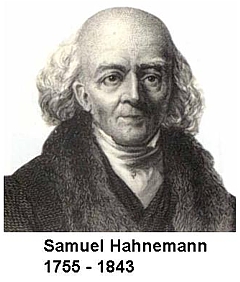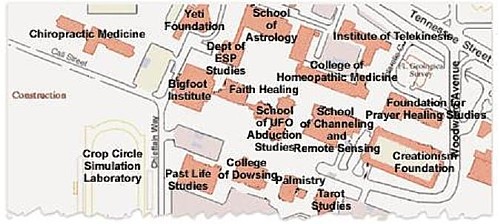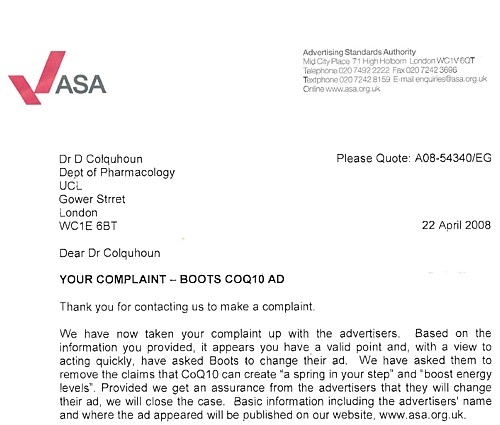Uncategorized
This post is written in part as a distraction from a plague of lawyers, in New Zealand, here in the UK, and now in the USA (my movie, Integratative baloney@Yale, has recently been removed from YouTube. More on that coming soon).
The duty of an advocate is to take fees, and in return for those fees to display to the utmost advantage whatsoever falshoods the solicitor has put into his brief.
[ Bentham, Jeremy , The Elements of the art of packing as applied to special juries , 1821]
The letter below comes from a much-copied piece of paper that I unearthed in my office during its decennial clearout. It was typed on a manual typewriter and I have no idea where it came from or whether it is genuine. Its origin has been discussed on the internet, with no firm conclusion. This post is a miscellany of thought that followed its rediscovery.
The alleged quotation shows that there is nothing new about the cult of managerialism, at least in Whitehall. It took longer to reach universities, which are now suffering an acute case of this sad condition,
| MESSAGE FROM THE DUKE OF WELLINGTON TO THE BRITISH FOREIGN OFFICE IN LONDON–
written from Central Spain, August 1812 Gentlemen, Whilst marching from Portugal to a position which commands the approach to Madrid and the French forces, my officers have been diligently complying with your requests which have been sent by H.M. ship from London to Lisbon and thence by dispatch to our headquarters. We have enumerated our saddles, bridles, tents and tent poles, and all manner of sundry items for which His Majesty’s Government holds me accountable. I have dispatched reports on the character, wit, and spleen of Unfortunately the sum of one shilling and ninepence remains unaccounted for in one infantry battalion’s petty cash and there has been a hideous confusion as to the number of jars of raspberry jam issued to one cavalry This brings me to my present purpose, which is to request elucidation of my instructions from His Majesty’s Government so that I may better understand why I am dragging an army over these barren plains. I construe that perforce it must be one of two alternative duties, as given below. I shall pursue either one with the best of my ability, but I cannot do both:
Your most obedient servant, Wellington |
Substitute the options
“I shall pursue either one with the best of my ability, but I cannot do both:
- To spend my days in endless meetings and form-filling for the benefit of the accountants and copy-boys in central administration, or perchance
- To do some original science.”
It seems a bit odd to be citing approvingly Arthur Wellesley, 1st Duke of Wellington. As a politician he was a high Tory and arch-opponent of parliamentary reform. He became prime minister in 1828, two years after
the foundation of UCL, the ‘godless institution of Gower Street”, and he was instrumental in the foundation of the traditionally religious rival to UCL, King’s College London.
Wellington’s government fell in 1830, and a Whig goverment was formed with Earl Grey as prime minister. In 1832, after many struggles, Lord John Russell managed to get the Great Reform Act passed (properly known as the Representation of the People Act 1832). This was an enormously important reform. It could be said to mark the beginning of true democracy in the UK.
The Whigs had been out of power for most of the time since the 1770s. But there were riots in the country and the Whigs advocated political reform as the best response to the unrest. Wellington, on the other hand, ignored the riots and continued with the Tory policy of opposition all reform and to any expansion of the franchise. He got the nickname “the iron duke” not because of his military prowess but because of the iron shutters he had to put on his London home, Apsley House, as protection against rioters. He lost a vote of no confidence on 15 November 1830, and was replaced as Prime Minister by Earl Grey, who put the passage of the Reform Bill in the hands of Lord John Russell
Lord John Russell was the grandfather of Bertrand Russell, whose 1935 essay, On the Value of Scepticism, had an enormous influence on me. This following quotation I find just beautiful, both the ideas, the wonderfully simple prose in which he conveys the ideas, and the Voltaire-like pure mischiefness.
| I wish to propose for the reader’s favourable consideration a doctrine which may, I fear, appear wildly paradoxical and subversive. The doctrine in question is this: that it is undesirable to believe a proposition when there is no ground whatever for supposing it true. I must, of course, admit that if such an opinion became common it would completely transform our social life and our political system: since both are at present faultless, this must weigh against it. I am also aware (what is more serious) that it would tend to diminish the incomes of clairvoyants, bookmakers, bishops and others who live on the irrational hopes of those who have done nothing to deserve good fortune here or hereafter. In spite of these grave arguments, I maintain that a case can be made out for my paradox, and I shall try to set it forth.
Bertrand Russell, 1935. On the Value of Scepticism |
 |
Bertrand Russell was brought up by his grandfather, Lord John Russell in Pembroke Lodge at the edge of Richmond Park (I’ve been there often, but only because it became a tea room, a welcome break from marathon training in the park). I saw Russell in the distance, speaking in Trafalgar Square at a CND rally in about 1963. It is the most striking example I know of the the very short time than there has been any real democracy in the UK. I was one step away from the passing of the Reform Act, the founding of UCL and medical reforms.
The medical connections.
Adrian Desmond’s fascinating book, The Politics of Evolution. described what was happening in medicine and biology at around the same time as Wellington was deposed, and the Reform Bill was passed. There was equal turmoil in the medical world. Radicals in London agitated for removal of the hegemony of the Royal Colleges and of Oxford and Cambridge, so proper medical schools could be established in London. That is the atmosphere in which UCL’s medical school was born.
Many of the first staff there came from Scotland. Robert Grant, UCL’s first professor of comparative anatomy, came from Edinburgh and brought to UCL the new French ideas about evolution, especially those of Geoffroy. His influence was enormous, not least because Charles Darwin was one of his students.
The same period saw the foundation in 1823 of Thomas Wakley’s “ribald and radical” medical journal, The Lancet. The Wikipedia entry gives us a taste of Wakley’s style,
“[We deplore the] “state of society which allows various sets of mercenary, goose-brained monopolists and charlatans to usurp the highest privileges…. This is the canker-worm which eats into the heart of the medical body.” Wakley, The Lancet 1838-9, 1,
“The Council of the College of Surgeons remains an irresponsible, unreformed monstrosity in the midst of English institutions – an antediluvian relic of all… that is most despotic and revolting, iniquitous and insulting, on the face of the Earth.” Wakley, The Lancet 1841-2,
2, p246.He was especially severe on whomever he regarded as quacks. The English Homeopathic Association were “an audacious set of quacks” and its supporters “noodles and knaves, the noodles forming the majority, and the knaves using them as tools”. [5] “
Plus ça change, plus c’est la même chose.
Samuel Hahnemann (1755 – 1843) was the originator of homeopathy. He was clearly a well-intentioned man.. There is good reason to believe that he thought dilution could not go on for ever, but he died 22 years before it became possible to calculate that his favourite 30C dilution already contained nothing at all.

| The bible of homeopaths is Hahnemann’s Organon der rationellen Heilkunde, “Organon of the Medical Art”. His views on dosage, as expressed in the six editions of this book are almost as self-contradictory as the other bible. Hahnemann’s writing about ‘vital spirits’ sounds very silly now, but it is language that was quite common at the end of the 18th century, before much was known about medicine or physiology. But his interest in chemistry was entirely sensible. |  |
Before 1800 Hahnemann started out with the very high doses that were conventional at the time. Unlike most of his contemporaries, he was smart enough to realise that giving 50 g of antimony was killing people so he kept reducing the dose until it was no longer toxic. Unfortunately he (like almost everyone else at the time) didn’t know about controls so he mistook lack of toxicity (because the dose was zero) for a beneficial effect. Nonetheless, for most of his life he did not advocate the extreme dilutions that many modern homeopaths use routinely.
In The Life and Letters of Dr Samuel Hahnemann by Thomas Lindsley Bradford, M.D.(or see Google books edition of the Organon), there is an interesting passage. According to the edition here pp. 237 – 238), this was a note attached to para. #283 in the first edition of the Organon.
| ” The doctrine of the divisibility of matter teaches us that we cannot make a part so small that it shall cease to be something, and that it shall not share all the properties of the whole.” |
Here Hahnemann refers to the doctrine of divisibility, but appears to be saying that dilution can go on for ever. But he also says something that directly contradicts this view (Organon, Dudgeon’s translation see also here, page 239 ). The emphasis is mine.
| “I must say that these procedures seem to show chiefly how high one can go with the potentized attenuation of medicines without their action on the human health becoming nil.“ |
Although this claims that you can dilute a lot, it also admits that if the dilution goes too far the effect would eventually vanish, contrary to the usual homeopathic “principle” that it should keep getting stronger and stronger. and contrary to Hahnemann’s suggestions in other places that he thought matter was infinitely divisible.
This passage shows quite clearly that Hahnemann did not believe that his medicines would work if they were diluted so much that that there were no molecules left. That he believed this is confirmed by a letter that Hahnemann wrote in a letter to a Dr Schreter dated September 13th, 1829. This letter reprimanded Schreter for advocating extremely high dilutions.
| “there must be some limit to the thing. It cannot go on to infinity” The original German version was “Es muss ein Ende geben, es kann nicht bis ins Unendliche weitergehen” |
This confirms that Hahnemann was aware of, and accepted, that matter was not infinitely divisible and his medicines would not work if they contained nothing of the original material.
This attitude is actually not at all surprising, because Hahnemann was an educated man and he had a particular interest in chemistry. He cannot have failed to be aware of Dalton’s atomic theory, which was published between 1805 – 1810, while Hahnemann was writing the first edition of the Organon.
Peter Morrell, in Hahnemann and Homeopathy, says
“These were obviously developments that Hahnemann could not have failed to know about and indeed, was thoroughly excited about, It is clear from many of his asides that he regarded chemistry as the most important science.”
What is astonishing is that I can find no example of Hahnemann ever having mentioned Dalton or Avogadro. Perhaps he was a bit scared by the implications of their suggestions that molecules could not be divided without changing their nature.
The first edition of the Organon was published in 1810. but in the 5th edition appeared 1833, ten years before his death, These dates turn out to be important.
John Dalton (1776 – 1844) was able to estimate relative atomic masses of various molecules, the smallest unit that a chemical can exist in without losing irs identity. His values were soon improved by Amadeo
Avogadro (1776 – 1856), in 1811. Avogadro made the very important proposal that the volume of a gas (strictly, of an ideal gas ) is proportional to the number of atoms or molecules that are present. More precisely, the relationship between the masses of the same volume of different gases (at the same temperature and pressure) corresponds to the relationship between their respective molecular weights. Hence, the relative molecular mass of a gas can be calculated from the mass of a sample of known volume.
BUT neither Avogadro nor Dalton knew how many molecules there were in a given mass of a substance
This is absolutely crucial because it means that, although Hahnemann realised that there was a limit to the dilutions that could be used, he had no way of knowing what that limit was,

The answer to that question was discovered only in 1865, 22 years after the death of Hahnemann. It was discovered not by Avogadro, but by Johann Josef Loschmidt (1821 – 1895). It is Loschmidt, not Avogadro, who discovered the crucial numerical value of ‘Avogadro’s number‘, and in the German literature it is known, properly, as Loschmidt’sche Zahl.
This number is 6.022 x 1023 molecules per mole. One mole of a pure compound is its molecular mass in grams. The molecular mass of carbon (relative to hydrogen) is 12, so 12 grams of carbon contain 6.022 x 1023 carbon atoms. The molecular mass of of strychnine is 334.4 so 334.4 grams of strychnine contain 6.022 x 1023 strychnine molecules.
Armed with the numerical value of Avogadro’s number, it is easy to calculate that a 30 C homeopathic dilution contains nothing whatsoever. More precisely, it would contain, on average, a single molecule in spherical pill with a diameter equal to the distance from the earth to the sun.
But Hahnemann could not have known that. If had lived another 25 years he would almost certainly have renounced the idea of using 30 C dilutions.
He had a good excuse for getting it wrong. He was dead before the knowledge existed to do the calculation
But modern homeopaths have no excuse whatsoever for believing the impossible.
Hahnemann would have thought they were nuts, I suspect. He was too intelligent to believe that medicines that contain no medicine could be effective. In his words, “It cannot go on to infinity”.
Acknowledgement
I very grateful to ‘ Lindy’ for help in checking the references that are cited here, and for helpful discussions.
The article below is an editorial that I was asked to write for the New Zealand Medical Journal, as a comment on article in today’s edition about the misuse of the title ‘doctor’ by chiropractors [download pdf]. Titles are not the only form of deception used by chiropractors, so the article looks at some of the others too. For a good collection of articles that reveal chiropractic for what it is, look at Chirobase
THE NEW ZEALAND
MEDICAL JOURNAL
Journal of the New Zealand Medical Association
NZMJ 25 July 2008, Vol 121 No 1278; ISSN 1175 8716

URL: http://www.nzma.org.nz/journal/121-1278/3158/ ©NZMA
Doctor Who?
Inappropriate use of titles by some alternative “medicine” practitioners
David Colquhoun
Who should use the title ‘doctor’? The title is widely abused as shown by Gilbey1 in this issue of the NZMJ in an article entitled Use of inappropriate titles by New Zealand practitioners of acupuncture, chiropractic, and osteopathy. Meanwhile, Evans and colleagues 2, also in this issue, discuss usage and attitudes to alternative treatments.
Gilbey finds that the abuse of the title doctor is widespread and that chiropractors are the main culprits. An amazing 82% of 146 chiropractics used the title Doctor, andL most of them used the title to imply falsely that they were registered medical practitioners.
Although it is illegal in New Zealand to do that, it seems clear that the law is not being enforced and it is widely flouted. This is perhaps not surprising given the history of chiropractic. It has had a strong element of ruthless salesmanship since it was started in Davenport, Iowa by D.D. Palmer (1845–1913). His son, B.J. Palmer, said that their chiropractic school was founded on “a business, not a professional basis. We manufacture chiropractors. We teach them the idea and then we show them how to sell” (Shapiro 2008)3 It is the same now. You can buy advice on how to build “build high-volume, subluxation-based, cash-driven, lifetime family wellness practices”
In her recent book3 , Rose Shapiro comments on the founder of chiropractic as follows.
“By the 1890s Palmer had established a magnetic healing practice in Davenport, Iowa, and was styling himself “doctor”. Not everyone was convinced, as a piece about him in an 1894 edition of the local paper, the Davenport Leader, shows.
A crank on magnetism has a crazy notion hat he can cure the sick and crippled with his magnetic hands. His victims are the weak-minded, ignorant and superstitious,those foolish people who have been sick for years and have become tired of the regular physician and want health by the short-cut method he has certainly profited by the ignorance of his victim. His increase in business shows what can be done in Davenport, even by a quack.”
D.D. Palmer was a curious mixture: grocer, spiritual healer, magnetic therapist, fairground huckster, religious cult leader—and above all, a salesman. He finally found a way to get rich by removing entirely imaginary “subluxations”.
Over 100 years later, it seems that the “weak-minded, ignorant, and superstitious” include the UK’s Department of Health, who have given chiropractics a similar status to the General Medical Council.
The intellectual standards of a 19th Century Mid-Western provincial newspaper journalist are rather better than the intellectual standards of the UK’s Department of Health, and of several university vice-chancellors in 2007.
Do the treatments work?
Neither Gilbey nor Evans et al. really grasp the nettle of judging efficacy. The first thing one wants to know about any treatment —alternative or otherwise — is whether it works. Until that is decided, all talk of qualifications, regulation, and so on is just vacuous bureaucratese. No policy can be framed sensibly until the question of efficacy has been addressed honestly.
It is one good effect of the upsurge of interest in alternative treatments that there are now quite a lot of good trials of the most popular forms of treatments (as well as many more bad trials). Some good summaries of the results are now available too. Cochrane reviews set the standard for good assessment of evidence. New Zealand’s Ministry of Health commissioned the Complementary and Alternative Medicine
website to assess the evidence, and that seems to have done a good job too. Their assessment of chiropractic treatment of low back pain is as follows:
There appears to be some evidence from one systematic review and four other studies, although not conclusive, that chiropractic treatment is as effective as other therapies but this may be due to chance. There is very little evidence that chiropractic is more effective than other therapies.
And two excellent summaries have been published as books this year. Both are by people who have had direct experience of alternative treatments, but who have no financial interest in the outcome of their assessment of evidence. The book by Singh and Ernst4 summarises the evidence on all the major alternative treatments, and the book by Bausell5 concentrates particularly on acupuncture, because the author was for 5 years involved in research in that area, Both of these books come to much the same conclusion about chiropractic. It is now really very well-established that chiropractic is (at best) no more effective than conventional treatment. But it has the disadvantage of being surrounded by gobbledygook about “subluxations” and, more importantly, it kills the occasional patient.
Long (2004)7 said “the public should be informed that chiropractic manipulation is the number one reason for people suffering stroke under the age of 45.”
The chiropractors of Alberta (Canada) and the Alberta Government are now facing a class-action lawsuit8. The lead plaintiff is Sandra Nette. Formerly she was a fit 41 year old. Now she is tetraplegic. Immediately
after neck manipulation by a chiropractor she had a massive stroke as a result of a torn vertebral artery.
Acupuncture comes out of the assessments equally badly. Bausell (2007) concludes that it is no more than a theatrical placebo.
Are the qualifications even real?
It is a curious aspect of the alternative medicine industry that they often are keen to reject conventional science, yet they long for academic respectability. One aspect of this is claiming academic titles on the flimsiest of grounds. You can still be held to have misled the public into thinking you are a medical
practitioner, even if you have a real doctorate. But often pays to look into where the qualifications come from.
A celebrated case in the UK concerned the ‘lifestyle nutritionist’, TV celebrity and multi-millionaire, Dr Gillian McKeith, PhD. A reader of Ben Goldacre’s excellent blog, badscience.net did a little investigation. The results appeared in Goldacre’s Bad Science column in the Guardian9.
She claimed that her PhD came from the American College of Nutrition, but it turned out to come from a correspondence course from a non-accredited US ‘college’. McKeith also boasted of having “professional membership” of the American Association of Nutritional Consultants, for which she provided proof of her degree and three professional references.
The value of this qualification can be judged by the fact that Goldacre sent an application and $60 and as a result “My dead cat Hettie is also a “certified professional member” of the AANC. I have the certificate hanging in my loo”.
Is the solution government regulation?
In New Zealand the law about misleading the public into believing you are a medical practitioner already exists. The immediate problem would be solved if that law were taken seriously, but it seems that it is not.
It is common in both the UK and in New Zealand to suggest that some sort of official government regulation is the answer. That solution is proposed in this issue of NZMJ by Evans et al2. A similar thing has been proposed recently in the UK by a committee headed by Michael Pittilo, vice-chancellor of Robert Gordon’s University, Aberdeen.
I have written about the latter under the heading A very bad report. The Pittilo report recommends both government regulation and more degrees in alternative medicine. Given that we now know that most alternative medicine doesn’t work, the idea of giving degrees in such subjects must be quite ludicrous to any thinking person.
The magazine Nature7 recently investigated the 16 UK universities who run such degrees. In the UK, first-year students at the University of Westminster are taught that “amethysts emit high yin energy” . Their vice chancellor, Professor Geoffrey Petts, describes himself a s a geomorphologist, but he cannot be tempted to express an opinion about the curative power of amethysts.
There has been a tendency to a form of grade inflation in universities—higher degrees for less work gets bums on seats. For most of us, getting a doctorate involves at least 3 years of hard experimental research in a university. But in the USA and Canada you can get a ‘doctor of chiropractic’ degree and most chiropractic (mis)education is not even in a university but in separate colleges.
Florida State University famously turned down a large donation to start a chiropractic school because they saw, quite rightly, that to do so would damage their intellectual reputation. This map, now widely distributed on the Internet, was produced by one of their chemistry professors, and it did the trick.

Other universities have been less principled. The New Zealand College of Chiropractic [whose President styles himself “Dr Brian Kelly”,though his only qualification is B. App Sci (chiro)] is accredited by the New Zealand Qualifications Authority (NZQA). Presumably they, like their UK equivalent (the QAA), are not allowed to take into account whether what is being taught is nonsense or not. Nonsense courses are accredited by experts in nonsense. That is why much accreditation is not worth the paper it’s written on.
Of course the public needs some protection from dangerous or fraudulent practices, but that can be done better (and more cheaply) by simply enforcing existing legislation on unfair trade practices, and on false advertising. Recent changes in the law on unfair trading in the UK have made it easier to take legal action against people who make health claims that cannot be justified by evidence, and that seems the best
way to regulate medical charlatans.
Conclusion
For most forms of alternative medicine—including chiropractic and acupuncture—the evidence is now in. There is now better reason than ever before to believe that they are mostly elaborate placebos and, at best, no better than conventional treatments. It is about time that universities and governments recognised the evidence and stopped talking about regulation and accreditation.
Indeed, “falsely claiming that a product is able to cure illnesses, dysfunction, or malformations” is illegal in Europe10.
Making unjustified health claims is a particularly cruel form of unfair trading practice. It calls for prosecutions, not accreditation.
Competing interests: None.
NZMJ 25 July 2008, Vol 121 No 1278; ISSN 1175 8716
URL: http://www.nzma.org.nz/journal/121-1278/3158/ ©NZMA
Author information: David Colquhoun, Research Fellow, Dept of Pharmacology, University College London, United Kingdom (http://www.ucl.ac.uk/Pharmacology/dc.html)
Correspondence: Professor D Colquhoun, Dept of Pharmacology, University College London, Gower Street, London WC1E 6BT, United Kingdom. Fax: +44(0)20 76797298; email: d.colquhoun@ucl.ac.uk
References:
1. Gilbey A. Use of inappropriate titles by New Zealand practitioners of acupuncture, chiropractic, and osteopathy. N Z Med J. 2008;121(1278). [pdf]
2. Evans A, Duncan B, McHugh P, et al. Inpatients’ use, understanding, and attitudes towards traditional, complementary and alternative therapies at a provincial New Zealand hospital. N Z Med J. 2008;121(1278).
3 Shapiro. Rose. Suckers. How Alternative Medicine Makes Fools of Us All Random House, London 2008. (reviewed here)
4. Singh S, Ernst E. Trick or Treatment. Bantam Press; 2008 (reviewed here)
5. Bausell RB. Snake Oil Science. The Truth about Complementary and Alternative Medicine. (reviewed here)
Oxford University Press; 2007
6. Colquhoun D. Science degrees without the Science, Nature 2007;446:373–4. See also here.
7. Long PH. Stroke and spinal manipulation. J Quality Health Care. 2004;3:8–10.
8. Libin K. Chiropractors called to court. Canadian National Post; June21, 2008.
9. Goldacre B. A menace to science. London: Guardian; February 12, 2007/
10. Department for Business Enterprise & Regulatory Reform (BERR). Consumer Protection from Unfair Trading Regulations 2008. UK: Office of Fair Trading.
After writing the recent post Boots reaches new level of dishonesty with CoQ10 promotion, I sent a complaint about the dishonesty of the advertisements to the Advertising Standards Authority. I got a surprsingly fast response. On April 22 I got

“it appears you have a valid point and, with a view to acting quickly, have asked Boots to change their ad. We have asked them to remove the claims that CoQ1 0 can create “a spring in your step” and “boost energy levels”. Provided we get an assurance from the advertisers that they will change their ad, we will close the case.”
Then on 1 May, the ASA said
“We have now received a response from Boots and they have given us an assurance that they will not repeat the problematic claims for this product. We have therefore closed our file on that basis.”
Boots agreed to this request, so no full investigation will appear. That’s a win for reason, up to a point, but it also shows how toothless the rules about advertising are. Boots launch a big promotion with advertisements that are simply not true. The promotion is over and they got clean away with it. All they get is a little publicised rap on the knuckles and no doubt they’ll do the same again next time.
This is an old joke which can be found in many places on the web, with minor variations. I came across it in an article by Gustav Born in 2002 (BIF Futura, 17, 78 – 86) and reproduce what he said. It has never been more relevant, so it’s well worth repeating. The title of the article was British medical education and research in the new century.

“The other deleterious development in UK research is increased bureaucratic control. Bureaucracy is notoriously bad for all creative activities. The story is told of a company chairman who was given a ticket to a concert in which Schubert’s Unfinished Symphony was to be played. Unable to go himself, he passed the ticket on to his colleague, the director in charge of administration and personnel. The next day the chairman asked, ‘Did you enjoy the concert?’ His colleague replied, ‘My report will be on your desk this afternoon’. This puzzled the chairman, who later received the following:
Report on attendance at a musical concert dated 14 November 1989. Item 3.
Schubert’s Unfinished Symphony.
- The attendance of the orchestra conductor is unnecessary for public performance. The orchestra has obviously practiced and has the prior authorization from the conductor to play the symphony at a predetermined level of quality. Considerable money could be saved by merely having the conductor critique the performance during a retrospective peer-review meeting.
- For considerable periods, the four oboe players had nothing to do. Their numbers should be reduced, and their work spread over the whole orchestra, thus eliminating the peaks and valleys of activity.
- All twelve violins were playing identical notes with identical motions. This was unnecessary duplication. If a larger volume is required, this could be obtained through electronic amplification which has reached very high levels of reproductive quality.
- Much effort was expended in playing sixteenth notes, or semi-quavers. This seems to me an excessive refinement, as listeners are unable to distinguish such rapid playing. It is recommended that all notes be rounded up to the nearest semi-quaver. If this were done, it would be possible to use trainees and lower-grade operatives more extensively.
- No useful purpose would appear to be served by repeating with horns the same passage that has already been handled by the strings. If all such redundant passages were eliminated, as determined by a utilization committee, the concert could have been reduced from two hours to twenty minutes with great savings in salaries and overhead.
- In fact, if Schubert had attended to these matters on a cost containment basis, he probably would have been able to finish his symphony.
In research, as in music, blind bureaucracy has the effect of destroying imaginative creativity. If that is truly valued, it must remain free from bureaucratic excesses. And indeed, the great strength of British science has always been the ability of curiosity-driven individuals to follow up original ideas, and the support that these individuals receive from organizations such as the MRC and the Wellcome Trust. This has given research workers the possibility to twist and turn in following up intuitions and ideas in other fields as well as their own. This freedom has been significantly eroded by job insecurity in universities and in commercial enterprises.”
Later in the article, Born talks about innovation in the pharmaceutical industry
“This ‘urge to merge’, which is affecting the pharmaceutical industry worldwide, is almost always claimed to be justified by the need for a larger research budget to sustain innovation. The actual evidence indicates that such mergers hide -for a while failure of innovation. An almost universal response to this problem has been to ‘streamline’ and ‘commercialize’ the process of research, with ultimate control vested in accountants rather than in pharmaceutically informed scientists. This has meant that the industry’s research and development programmes are being driven by technical novelties, notably computer- aided drug design, combinatorial chemistry, high-throughput screening and genomics. All these techniques are very cost-intensive and, what is worse, are superseding individual scientists with profound appreciation of disease mechanisms and knowledge of biochemical and pharmacological mechanisms. It is they whose ability to ask the crucial, often seemingly simple questions, that have led to blockbuster drugs. Outstanding British examples are James Black’s discovery of the gastric acid secretion inhibitors, and Hans Kosterlitz’s question whether the brain might perhaps contain some analgesic chemical like that in -of all things the poppy plant.”
“The fact is that drug discovery, like all discoveries, is more an individual than a team achievement, at least at the beginning. With a few notable exceptions, the trouble with the industry is summarized by a group research director at one of the leading pharmaceutical companies:
“Creative individuals are being driven out of the industry and being replaced by functionaries wbo parrot strategic maxims. Research is being driven by lawyers, financial experts, salesmen and market strategists who are completely unable to develop new ideas. It is doubtful whether there are any senior executives who understand the problem” (Drews, J., 1999 In quest of tomorrow’s medicine, Springer-Verlag, New York).
And further:
“Partly as a result of mismanagement and partly as a result of a search for solutions which takes no account of disease mechanisms and biomedical complexity, substantial parts of the pharmaceutical industry are failing to innovate at a rate which is needed for their health and for the health of the general public. Research management needs to be rethought with a much greater emphasis on creative individuals with a broad knowledge of biology and medicine, a lower emphasis on market research, and a greater openness to the information to be gained from clinical studies (Horrobin, D.F., 2000, Innovation in the pharmaceutical industry. J. R. Soc. Med. 93, 341 – 345. ).”
For more on keeping univeristies honest, see the excellent new blog, The storm breaking upon the university.
When one thinks of the cult of managerialism, one name that comes to mind is Howard Newby. During his time at HEFCE, research funding became enormously concentrated, rather than being spent on good work wherever it occurred. But Newby is not a scientist, so I suppose he just doesn’t understand how it’s done. Some recent developments in his career seemed worth noting. I make no comment on the changes that left staff at the University of the West of England (UWE) so demoralised, because I don’t know enough about them.
In Nature (December 2001), Newby was quoted as saying
“The improvements in performance since the last RAE are a direct result of institutions managing their research strategically,”
Anybody who thinks that is totally out of touch with how science works. What actually happened, of course, is that universities learned out to fiddle their submissions better. It is just another example of Goodhart’s law.
But what about the following facts?
In the Guardian, Stephen Bates writes thus.
“Sir Howard Newby is continuing his progress through the groves of academe like a ballbearing in a pinball machine, with the announcement yesterday that he is to become the next vice-chancellor of Liverpool University, barely a year since he took up the same post at the University of the West of England [UWE] in Bristol. Sir Howard is gathering such titles – he was previously vice-chancellor at Southampton, before becoming chief executive of the Higher Education Funding Council for England and president of Uni versities UK.”
The Guardian in “Will the Newby broom sweep clean?” shows the quality if the argument.
“”Steven West, the university’s deputy vice-chancellor, who officially takes over
as acting vice-chancellor on September 1, said that the plans set in place by
Sir Howard would be taken forward and delivered.“The strategy is right and many
other universities are now going down this road. That’s testimony to the fact
we have got it right,”
Everyone is doing it so it must be right? Ahem, just one problem there surely. Everyone is doing it, but nobody has bothered to try to discover if it has done any good, West’s argument is only too typical of the circular, and data-free, argument so beloved of the management-speak folks, It seems that fashion, rather than results, guide what happens in the world of management bollocks.
The Guardian continues
” . . . university officials said staff were consulted, academics
felt decisions had been made ahead of any conclusions, particularly regarding
the reconfiguring of faculties and a controversial new policy on intellectual
property.”
Uhuh. Decisions made before the consultation? Sounds familiar?
But it gets worse,
“The use of management consultancy firms linked to both Sir Howard and his wife, assistant vice-chancellor Lady Sheila Newby, also caused concern.
“They were private companies with no idea about university or academe telling us how to do things and what to do. People got upset because he was running the university life a little fiefdom and giving very big contracts to his mates,”
said one academic, who preferred not to be named.”
And. from Wikipedia, we learn this.
“He was appointed as the vice chancellor of the University of the West of England , starting in March 2006. In May 2007 Private Eye (Eye 1185) reported that Sir Howard has used his position at the University to secure a highly paid job for his wife and to contract services to a company, Carter and Carter, of which Sir Howard is a non-executive director.
Following these revelations it was announced in July 2007 that he will be taking up the post of Vice-Chancellor of the University of Liverpool from September 2008. “
The Bristol Blogger puts it rather more bluntly.
“UWE Vice-Chancellor Sir Howard Newby is quitting the university, less than two years in to the job, after becoming embroiled in a major conflict of interest scandal between the university and his private education business Carter and Carter. The episode is said to have caused “disquiet” among many on the university’s governing body.”
“Serious concerns were raised about Newby when it was revealed recently he had concluded a deal on UWE’s behalf with a private sector training company, Carter and Carter. Newby, however is a director of the company and was therefore effectively awarding himself a lucrative public sector contract! Questions have also been asked about his relationship to the university’s Deputy Vice-Chancellor. Her name is Lady Sheila Newby!”
“As for Newby’s big idea to turn UWE into a piece of jargon called a “knowledge exchange” that lies well and truly in tatters. The only exchange that’s gone on at UWE recently seems to be public cash into Newby’s private hands.”
Well, at least the UWE’s “knowledge exchange” doesn’t extend to promoting anti-scientific quackery. But it seems that they may be working on that omission.
More on Newby can be found at Eco-Logic, from someone with first hand experience.
The saga of the excommunication of this page, and its de-excommunication, is described here, and here, and here.
I am supposed to be on holiday, but the Red Lion in Grasmere has a wireless network, and this is just too good not to post at once. So, after a distinctly moist walk over Loughrigg Fell, and an excellent dinner, here goes.

Panorama from half way up Loughrigg Fell, with Grasmere on left and Rydal Water on write, taken just before the downpour started.
 Loughrigg Fell and Rydal Water on left. Grasmere Lake above and Grasmere village (right) with GPS track.
Loughrigg Fell and Rydal Water on left. Grasmere Lake above and Grasmere village (right) with GPS track.
The main trigger for the allegations of defamation seems to have been the fact that I said (and still say), apropos of Dr Ann Walker’s description of red clover, “What on earth is a “blood cleanser” or a “cleanser of the lymphatic system”. This is so much meaningless gobbledygook”.
This set me wondering about the origin of the term “blood cleanser”, and who better to ask than the erudite Micheal Quinion of the wonderful World Wide Words site. His weekly newsletter is invariably fascinating. And buy his books.
Michael Quinion has kindly given permission for me to reproduce his “non-definitive” investigation into the use of the term “blood cleanser”. It seems to have been a favourite of snake oil salesmen in thw 19th century. Of course, none of them defined what it means. You are just meant to know that it’s something good.
Quinion on “Blood Cleanser”“The exact phrase “blood cleanser” is known no later than the nineteenth century. The earliest I’ve found is from an advertisement in the Ohio Democrat for 30 June 1871 (it ran regularly from then on) “D.B. FAHRNEY’S Blood Cleanser or Panacea, for sale by Miller & O’Donnel, is becoming a popular family medicine.” There was also Prof. Chapins’ Blood Cleanser, advertised the following year. But the concept of cleansing the blood is very much older, of course. I have found another advertisement, in the Milwaukee Evening Courier of Wisconsin, dated 22 March 1847: “As a SPRING and FALL PURIFIER it cannot be surpassed, working its way through the system with a silent and effective force,–Cleansing the BLOOD; Removing DYSPEPTIC INFLUENCES; Variations on the phrase also occur several times in Culpeper’s Herbal (1653 edition) in the section on hops: “In cleansing the blood they help to cure the French diseases, and all manner of scabs, itch, and other breakings-out of the body; as also all tetters, ringworms, and spreading sores, the morphew and all discolouring of the skin.” Another example is: “The roots of this Bastard Rhubarb are used in opening and purging diet- #drinks, with other things, to open the liver, and to cleanse and cool the blood.” It also appears earlier still in The Anatomy of Melancholy by Richard Burton (1621): “And because the spleen and blood are often misaffected in melancholy, I may not omit endive, succory, dandelion, fumitory, &c., which cleanse the blood, Scolopendria, cuscuta, ceterache, mugwort, liverwort, ash, tamarisk, genist, maidenhair, &c., which must help and ease the spleen.” No doubt a more thorough search will turn up still earlier examples. (My sources are poor before the eighteenth century.)” |
This is a slightly modified version of some thoughts from the old improbable science page, where they formed part of the review of a BBC2 series on alternative medicine. It has been moved to the new blog because of the comments posted here.
Evolution of plants
Plants didn’t evolve for our benefit. Natural selection ensures that plants, like every other living thing, evolve in a way that maximises their own chance of survival. To ensure that, plants should be as toxic as possible to anything that might eat them. The more harm a plant does to humans, the better its chance of survival. It is sheer luck that some of the toxic principles evolved by plants occasionally turn out to be useful.
| Memo to: The members of the Kansas Board of Education From: God Re: Your decision to eliminate the teaching of evolution as science Thank you for your support. Much obliged. Now, go forth and multiply. Beget many children. And yea, your children shall beget children. And their children shall beget children, and their children’s children after them. And in time the genes that made you such pinheads will be eliminated through natural selection. Because that is how it works.’ . . . ; By Gene Weingarten, Washington Post Staff Writer. Saturday, August 14, 1999; Page C01 |
Naturalness
Here are some products of nature. That doesn’t mean they are good for you.
Lead, uranium, radon, arsenic, thallium, strychnine, cyanide (in Sorghum and Prunus species), Stinging nettles, poison ivy, yew, deadly nightshade, castor beans (ricin), tobacco, curare, foxglove, fly agaric, (muscarine), death cap (amanita phalloides), . . ..
Foxgloves, heart failure and biological standardisation
Here is a bit of relevant pharmacological history.
The 24th edition of Martindale’s Extra Pharmacopoeia (1958) describes Digitalis Leaf (B.P., I.P.), also known as Digit. Fol.; Digitalis; Foxglove Leaf; Feuille de Digitale; Fingerhutblatt; Hoja de digital.
| It was defined as “the dried leaves of Digitalis purpurea (Scrophulariaceae).”At that time it was sometimes prescribed as Prepared Digitalis (BP), which is “Digitalis leaf reduced to powder, no part being rejected, and biologically assayed the strength being stated in units per g. For therapeutic purposes it must be adjusted to contain 10 units in 1 g.”Sometimes foxglove leaf was prescribed as Tincture of Digitalis (B.P., I.P.). “It may be made from unstandardised leaf, the tincture being subsequently biologically assayed, or it may be made from prepared digitalis, using a quantity containing 1000 units per litre, by percolation or maceration, with alcohol (70 %). It contains 1 unit per ml. I.P. allows also 1 unit per g. Dose: 0.3 to 1 ml. (5 to 15 minims). ” |
 |
Although these preparations are now totally defunct, they were still better than the sort of thing that is now advocated by herbalists. Why? They were better because they were standardised.
Foxglove leaves contain several chemical compunds that are useful in certain forms of hear failure. But the margin of safety is quite low. Take a bit too much and it kills you not cures you. One batch of foxglove leaves will contain different amounts of active compounds from the last batch, and that endangered patients.
From the 1930s onwards, pharmacologists developed methods of biological assay that overcame this problem. An international
standard digitalis leaf sample was established. Every new batch had to be assayed against this standard, and diluted to a fixed level of biological activity. This ensured that each batch of digitalis powder had the same biological potency as the last batch. It was a great pharmacological advance in its time. But of course it did involve the use of animals for the biological assay.
All this was solved when the active principles were purified from the foxglove leaves. There was no longer any need to uses animals for biological assays. The right amount of pure digoxin or digitoxin could be weighed out.
Fortunately herbalists are not allowed to prescribe anything as potentially dangerous as digitalis. But in general herbalists are happy to use pre-1930, unstandardised plant extracts.
I can think of no case in which there is the slightest reason to think that the mixture of chemicals in the plant is any better than the purified active principles. Of course there could be such cases of synergy. But that is just idle speculation.
No surprise there then, because idle speculation is the stuff of alternative medicine. It’s a great deal easier than making the effort to find out what works, and probably more lucrative too.
